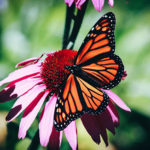Capturing birds of prey in their natural habitat is a dream come true for any aspiring wildlife photographer. However, with limited time and a day job, it’s difficult to travel hundreds of miles to a wildlife sanctuary. Luckily there’s an alternative. Visit your nearest bird rehabilitation center. N-Photo has some tips on how to shoot these magnificent birds of prey with a simple kit:

Get Close to Your Subject
Getting close to your subject in its natural habitat may be easier said than done, but it’s possible to get in close at a bird rehabilitation center, like the one featured in the video. Centers like this are really great for budding wildlife photographers to capture beautiful images without requiring expensive gear. Even an inexpensive lens like the Nikkor 55-300mm f/4.5 – 5.6 G ED lens is capable of shooting great images if you can manage to get in close.
Bring a Quality Tripod
Some shots can be planned ahead of time, and for setting them up you need a good quality tripod.

A quality tripod with a ball head is essential.
A quality tripod is similarly useful when you are shooting with a long telephoto lens. Choose one that allows you to use a quick adjustable ball-head. A ball-head is the ultimate in terms of flexibility when you need to quickly set up a shot or adjust it.
Keep the Background Uncluttered
Two things can make a wildlife image pop: a clean and uncluttered background and the bird looking straight at the camera. A clean background helps to isolate the bird.
Use Manual Focus
Focusing is the key to any image—not just wildlife images.

Take Off
Manually select your focus point and then focus on the bird’s eyes. A surefire way to capture an intriguing bird portrait is to make the eyes sharp.
Vary Your Angle
Keep changing your angle and experiment with the shots. Once you have a few full body shots, change the camera angle and recompose for some headshots.
Photographing Birds in Flight
To capture birds in flight you need a slightly different approach. Use a wide aperture to separate your subject from the background and a fast shutter speed to freeze the bird in mid-flight.
Focusing Mode
Switch to continuous auto-focusing so that the bird is in focus at all times. Additionally, switch to continuous shooting mode (burst mode) for maximizing the number of frames. Modern auto-focusing systems are pretty evolved and allow you to pan with the bird while keeping it in focus (focus tracking with lock-on).
Shooting Mode
Aperture priority is the best mode to shoot in. Set the aperture value at the widest aperture possible on the lens. This will help to better separate the subject and background.
Shooting Position
Watching how the birds behave and how they take to flight and land are important if you are looking to capture better bird photos.

Perfect landing!
Larger birds will take off into the wind, so standing upwind will allow you to make better in-flight images highlighting their wingspan. Another good time to shoot is just when the bird is about to take off or land.
Negative Space

Leave some space in front of the bird.
Leaving some space in front for the bird to fly into is a good way to compose great in-flight images. Also make sure you don’t leave too much space behind the bird.
Be sure to keep these tips in mind next time you go out to photograph birds of prey.
Like This Article?
Don't Miss The Next One!
Join over 100,000 photographers of all experience levels who receive our free photography tips and articles to stay current:






Leave a Reply